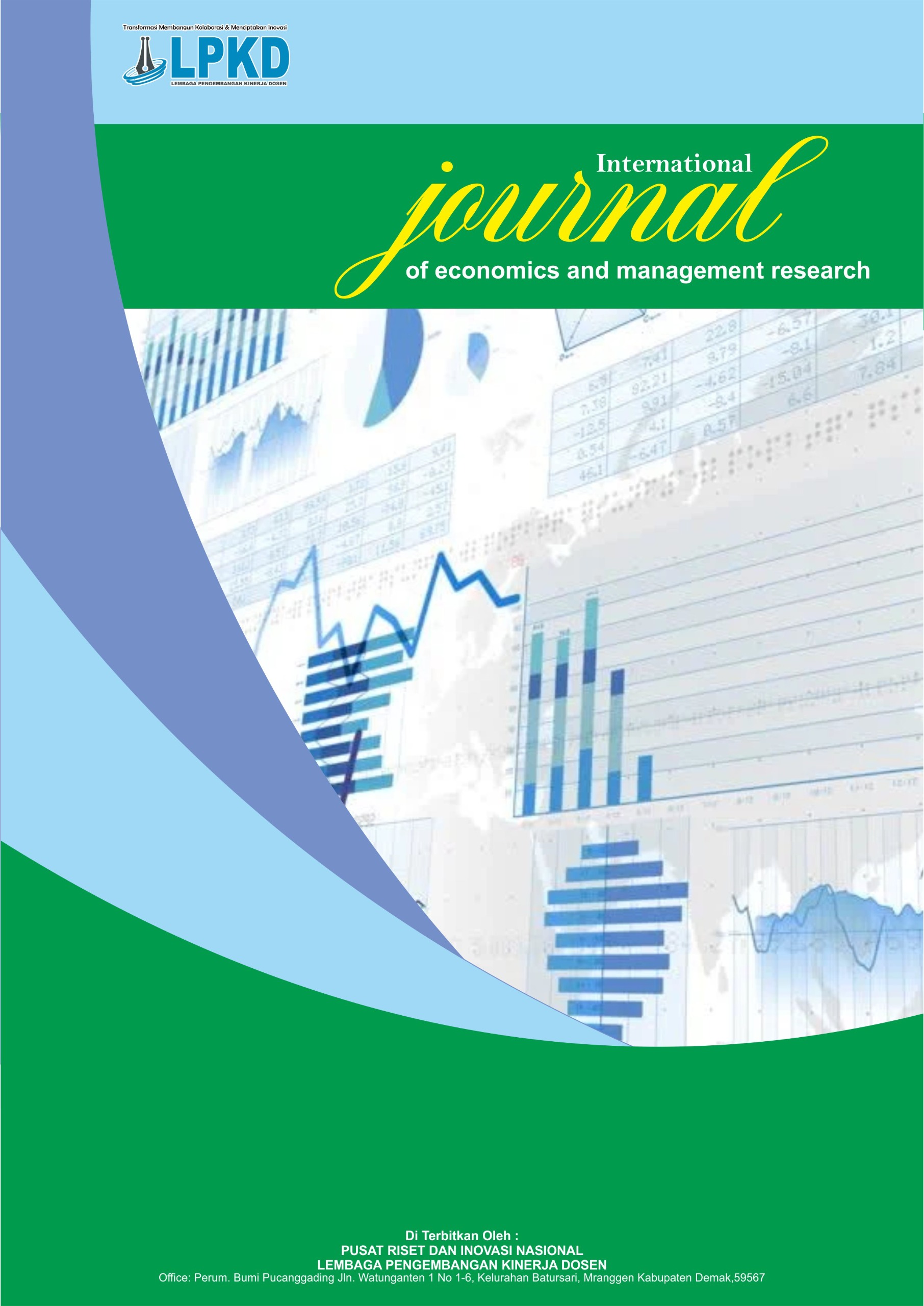Human Resource Management (HR) Strategy in Improving Employee Performance at PT. Riau Islands Port
DOI:
https://doi.org/10.55606/ijemr.v4i1.482Keywords:
HR Management, Employee Performance, HR StrategyAbstract
: This study aims to analyze HR management strategies at PT. Riau Islands Port in improving employee performance. The research uses a qualitative descriptive method with data collection techniques through observation, interviews, and documentation. Based on in-depth interviews with management, it shows that the company implements effective communication strategies, providing incentives, and a collaborative work system. In addition, assignments are tailored to employee characteristics and competencies to ensure performance optimization. The main challenges faced are the differences in work ethic between individuals and the low awareness of some employees in valuing their work, which is overcome through mentorship and competency development. Overall, this strategy contributes to improving employee performance and achieving company goals.
References
[1] Ami, M., Setiawan, D., & Ramadhani, F. (2023). Pengaruh strategi pengelolaan SDM terhadap kinerja GAPOKTAN di Madura. Jurnal Manajemen Pembangunan, 9(1), 45–58.
[2] Armstrong, M., & Taylor, S. (2020). Armstrong’s handbook of human resource management practice (15th ed.). Kogan Page.
[3] Carter, N., Bryant-Lukosius, D., DiCenso, A., Blythe, J., & Neville, A. J. (2020). The use of triangulation in qualitative research. Oncology Nursing Forum, 41(5), 545–547. https://doi.org/10.1188/14.ONF.545-547
[4] Creswell, J. W., & Poth, C. N. (2018). Qualitative inquiry and research design: Choosing among five approaches (4th ed.). SAGE Publications.
[5] Daniel Tyskbo. (2020). HRM and the new logic of business: Reframing performance management and measurement. Journal of Organizational Effectiveness: People and Performance, 7(3), 291–309. https://doi.org/10.1108/JOEPP-04-2020-0066
[6] Dessler, G. (2020). Human resource management (15th ed.). Pearson Education.
[7] Kotecha, P., Talati, J., & Sanghvi, R. (2024). The impact of training and motivation on employee performance. Journal of Business Management, 12(2), 110–122.
[8] Kravariti, F., & Johnston, K. (2020). Talent management: A critical review. Journal of Strategic Human Resource Management, 11(1), 78–91.
[9] Lincoln, Y. S., & Guba, E. G. (1985). Naturalistic inquiry. SAGE Publications.
[10] Malik, A., Frost, H., Mendy, J., & McKenna, B. (2022). The digitalisation of HRM: A systematic review. International Journal of Human Resource Management, 33(15), 3007–3034. https://doi.org/10.1080/09585192.2020.1847189
[11] Marshall, C., & Rossman, G. B. (2021). Designing qualitative research (7th ed.). SAGE Publications.
[12] Medina-Garrido, J. A., Biedma-Ferrer, J. M., & Ramos-Rodríguez, A. R. (2023). Work-life balance and employee performance: The mediating role of job satisfaction. Employee Relations, 45(1), 83–101. https://doi.org/10.1108/ER-03-2022-0148
[13] Miles, M. B., Huberman, A. M., & Saldaña, J. (2020). Qualitative data analysis: A methods sourcebook (4th ed.). SAGE Publications.
[14] S., Norris, J. M., White, D. E., & Moules, N. J. (2017). Thematic analysis: Striving to meet the trustworthiness criteria. International Journal of Qualitative Methods, 16(1), 1–13. https://doi.org/10.1177/1609406917733847
[15] Palinkas, L. A., Horwitz, S. M., Green, C. A., Wisdom, J. P., Duan, N., & Hoagwood, K. (2020). Purposeful sampling for qualitative data collection and analysis in mixed method implementation research. Administration and Policy in Mental Health and Mental Health Services Research, 42(5), 533–544. https://doi.org/10.1007/s10488-013-0528-y
[16] Prasetyo, B., & Sukatin. (2021). Analisis kinerja pegawai berdasarkan sistem manajemen kinerja terintegrasi. Jurnal Administrasi dan Manajemen, 11(2), 205–218.
[17] Purba, J. T., & Prahiawan, W. (2024). Strategi pengembangan SDM dan kinerja karyawan. Jurnal Ekonomi & Manajemen, 6(1), 72–85.
[18] Sobari, I., & Rony, R. (2025). SDM unggul dalam perspektif keunggulan kompetitif. Jurnal Ekonomi Pembangunan Daerah, 3(1), 15–26.
[19] Stein, N., Nordin, A., & Bagheri, A. (2021). Linking leadership styles and employee engagement. International Journal of Human Resource Studies, 11(2), 57–74. https://doi.org/10.5296/ijhrs.v11i2.18642
[20] Supriyadi, I., Khamdari, E., & Susilowati, F. (2020). Peran manajemen SDM dalam peningkatan kinerja organisasi. Orbith: Jurnal Ilmu Manajemen, 16(1), 27–34.
[21] Ulrich, D. (1997). Human resource champions: The next agenda for adding value and delivering results. Harvard Business Press.
[22] Wiyono, R., Siregar, H., & Sari, N. (2025). Praktik ESG dalam pengelolaan SDM dan dampaknya terhadap loyalitas karyawan. Jurnal Kebijakan dan Manajemen Publik, 5(2), 133–147.
Downloads
Published
How to Cite
Issue
Section
License
Copyright (c) 2025 International Journal of Economics and Management Research

This work is licensed under a Creative Commons Attribution-ShareAlike 4.0 International License.







